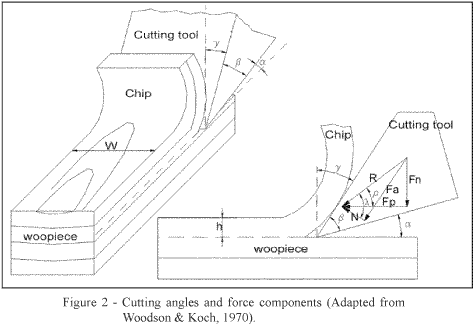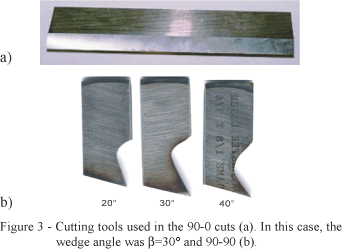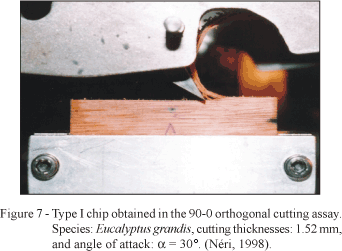The distinct characteristics of juvenile and mature woods, which are observed particularly in softwoods, have an influence on processing due to their different mechanical resistance properties in relation to cutting operations. In the past, when most of the wood used industrially came from adult trees of natural forests, little importance was given to a distinction between different zones of the tree stem. At present, however, as the supply of mature trees with large diameters from native forests is constantly decreasing, the use of short-cycle trees has become a common practice, through the adoption of species that grow relatively fast, such as pines and eucalyptus. In both softwoods and hardwoods, juvenile wood cells are generally smaller and thinner than in mature wood, and this reflects on their density and mechanical resistance, which should have an effect on the cutting forces developed during processing. The main object of this research was to evaluate orthogonal cutting forces in juvenile and mature Pinus taeda woods. Cutting force magnitude differences were observed for those two regions of the trunk, with parallel cutting forces being 33.4% higher, on average, at the mature wood region for 90-0 cutting, and 12% higher for 90-90 cutting. This result is consistent with the distinct anatomical structures of the material, since the forces developed during machining depend directly upon its properties.
wood machining; softwood; plantation wood; cutting optimization


















